 Back to Archaeological Sites
Back to Archaeological Sites
Ancient Egyptian Culture, Mummies, Statues, Burial Practices and Artefacts index
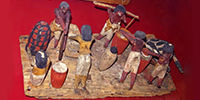
The early beginnings of Ancient Egyptian culture to just before the First Dynasty.
Last updated Tuesday 26 March 2024
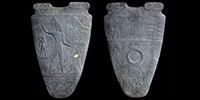
Ancient Egyptian culture from the unification of Egypt under King Narmer at the beginning of the first Dynasty, to the end of the 10th Dynasty, at a time of administrative chaos.
Last updated Sunday 23 June 2024
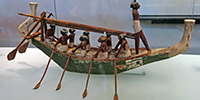
Ancient Egyptian culture from the 11th Dynasty, with strong leaders who worked to reunify Egypt, to the end of the 17th Dynasty.
Last updated Tuesday 17 September 2024
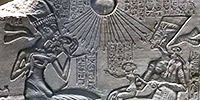
Ancient Egyptian culture during the 18th Dynasty, when Egypt reached the peak of its power. Famous Pharaohs of this period included Akhenaten and Tutankhamun.
Last updated Thursday 20 February 2025
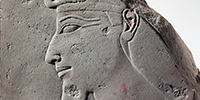 The Battle of Megiddo was fought in the 15th century BC between Egyptian forces under the command of Pharaoh Thutmose III and a large rebellious coalition of Canaanite vassal states led by the king of Kadesh. It is the first battle to have been recorded in what is accepted as relatively reliable detail. Megiddo is also the first recorded use of the composite bow and the first body count. The Egyptians routed the Canaanite forces, which fled to safety in the city of Megiddo. Their action resulted in the lengthy Siege of Megiddo.
The Battle of Megiddo was fought in the 15th century BC between Egyptian forces under the command of Pharaoh Thutmose III and a large rebellious coalition of Canaanite vassal states led by the king of Kadesh. It is the first battle to have been recorded in what is accepted as relatively reliable detail. Megiddo is also the first recorded use of the composite bow and the first body count. The Egyptians routed the Canaanite forces, which fled to safety in the city of Megiddo. Their action resulted in the lengthy Siege of Megiddo.
Last updated Thursday 12 September 2024
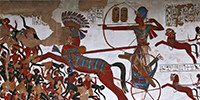
Ancient Egyptian culture from the 19th Dynasty, to the end of the 20th Dynasty, the New Kingdom, in 1077 BC, during which Ramesses II (Ramesses the Great) consolidated control of large areas of Egypt and Nubia.
Last updated Sunday 31 March 2024
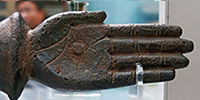
Ancient Egyptian culture from the start of the 21st Dynasty with Smendes (Nesbanebdjed I) in 1077 BC to the conquest of Egypt by Alexander in 332 BC. During this period the power of Egypt was in steady decline.
Last updated Monday 13 May 2024
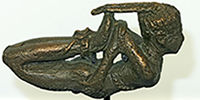
Nubia and the Kingdom of Kush covered an area larger in area than that of Egypt, and as old, stretching from the 1st cataract of the Nile to the junction of the Blue and White Nile at Khartoum. At one time, during the 25th Dynasty, all of Egypt and Nubia was ruled by the Nubians, who invaded Egypt and attempted to bring it back to its former glory, with all of its ancient Egyptian art and gods. This page traces the history of Nubia from its earliest known beginnings with a Palaeolithic handaxe found at Selima Oasis in Sudan, made around 100 000 BC, to the end of the Meroitic Culture in 350 AD, when Meroë was destroyed by the Ethiopian Kingdom of Aksum.
Last updated Monday 06 May 2024
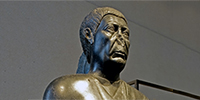
Ancient Egyptian culture from the conquest of Egypt by Alexander in 332 BC, through the Ptolemaic period, to its decline as a Roman Province
Last updated Monday 25 November 2024
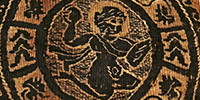 Works of art and textiles from the Coptic Period in Egypt and neighbouring countries. Coptic textiles, whose production began in the third and fourth centuries AD in Egypt, were hand woven with unbleached linen warps and dyed wool wefts and frequently featured woollen tapestry decoration. Men's garments were done in sedate colours with monochrome interlace motifs while women favoured floral and figural decorations.
Works of art and textiles from the Coptic Period in Egypt and neighbouring countries. Coptic textiles, whose production began in the third and fourth centuries AD in Egypt, were hand woven with unbleached linen warps and dyed wool wefts and frequently featured woollen tapestry decoration. Men's garments were done in sedate colours with monochrome interlace motifs while women favoured floral and figural decorations.
Last updated Friday 22 March 2024
 Back to Archaeological Sites
Back to Archaeological Sites
 Back to Archaeological Sites
Back to Archaeological Sites







 Back to Archaeological Sites
Back to Archaeological Sites
 The Battle of Megiddo was fought in the 15th century BC between Egyptian forces under the command of Pharaoh Thutmose III and a large rebellious coalition of Canaanite vassal states led by the king of Kadesh. It is the first battle to have been recorded in what is accepted as relatively reliable detail. Megiddo is also the first recorded use of the composite bow and the first body count. The Egyptians routed the Canaanite forces, which fled to safety in the city of Megiddo. Their action resulted in the lengthy Siege of Megiddo.
The Battle of Megiddo was fought in the 15th century BC between Egyptian forces under the command of Pharaoh Thutmose III and a large rebellious coalition of Canaanite vassal states led by the king of Kadesh. It is the first battle to have been recorded in what is accepted as relatively reliable detail. Megiddo is also the first recorded use of the composite bow and the first body count. The Egyptians routed the Canaanite forces, which fled to safety in the city of Megiddo. Their action resulted in the lengthy Siege of Megiddo. 
 Works of art and textiles from the Coptic Period in Egypt and neighbouring countries. Coptic textiles, whose production began in the third and fourth centuries AD in Egypt, were hand woven with unbleached linen warps and dyed wool wefts and frequently featured woollen tapestry decoration. Men's garments were done in sedate colours with monochrome interlace motifs while women favoured floral and figural decorations.
Works of art and textiles from the Coptic Period in Egypt and neighbouring countries. Coptic textiles, whose production began in the third and fourth centuries AD in Egypt, were hand woven with unbleached linen warps and dyed wool wefts and frequently featured woollen tapestry decoration. Men's garments were done in sedate colours with monochrome interlace motifs while women favoured floral and figural decorations.